
Railroads Helped Businesses Grow
Railroads were extremely important to the development of Iowa’s
industries. Because the railroads connected the state with the rest
of the country, products made in Iowa’s factories could be shipped
to other states all over the country.
Railroads were a more dependable means of transportation than steamboats.
When the rivers froze in the north, steamboats could not operate.
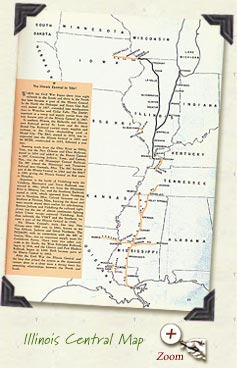 But
railroads could run every month of the year. But
railroads could run every month of the year.
The Illinois Central Railroad was the main line through Waterloo.
As railroading developed, Waterloo had many railroad lines that carried
products in and out of the city. Because trains were huge and only
traveled where the tracks were laid, designers had to work carefully
to make sure the tracks were at just the right places. They also developed
the roundhouse which was built to allow engines to be changed from
one train to another.
A roundhouse was built on East 4th Street
in Waterloo. The roundhouse had a huge platform that could be rotated.
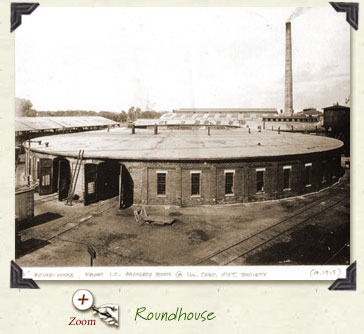
The train engine was rolled onto the platform. The engine was then
disconnected from the rest of the train. The platform could rotate
so that another engine could be connected to the train.
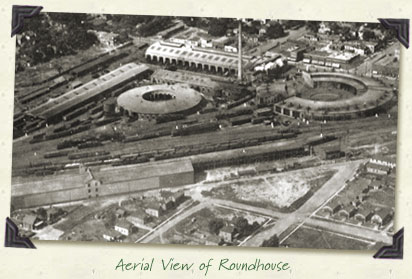
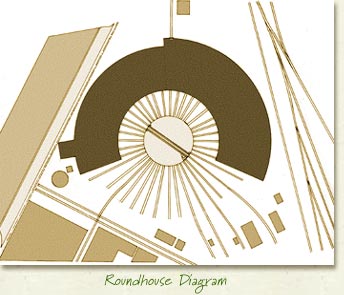
Railroads were a wonderful invention but they could also be dangerous.
Tracks had to be maintained so trains didn’t derail and cause
great property damage and loss of life. Conductors had to be careful
that only one train was on the same section of track at the same time.
If a train got on the wrong track and collided with another, many
people could be hurt or killed and much damage could be done to property.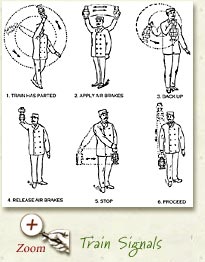 Early railroad conductors depended on hand signals to communicate.
Early railroad conductors depended on hand signals to communicate.
This chart illustrates some of the signals conductors used to communicate
before more advanced technology allowed them to speak to one another
electronically.

|



